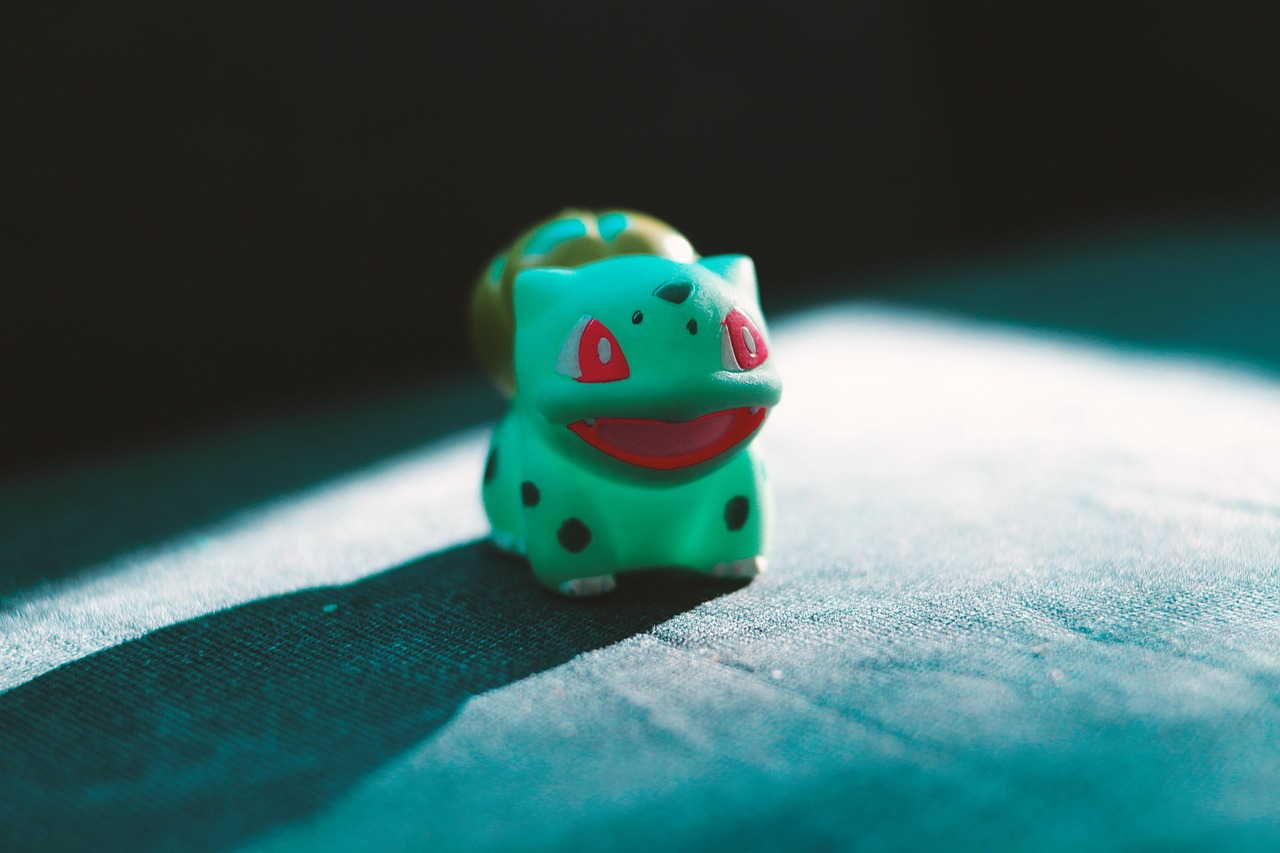This article explores the fascinating world of Bulbasaur, a dual-type Grass/Poison Pokémon that has captured the hearts of trainers and fans alike. We will examine its unique abilities, strengths, weaknesses, and effective battle strategies, providing a comprehensive guide for both novice and experienced trainers.
Understanding Bulbasaur: An Overview
Bulbasaur is one of the original Pokémon introduced in the series, known for its distinctive bulb on its back. This bulb absorbs sunlight, allowing Bulbasaur to thrive in various environments. As a starter Pokémon, it evolves into Ivysaur and eventually into Venusaur, showcasing its growth and adaptability throughout its journey.
Bulbasaur’s Abilities: What Sets It Apart
Bulbasaur boasts unique abilities that enhance its performance in battles. The primary abilities are Chlorophyll and Overgrow, both of which can be strategically utilized to gain an advantage over opponents.
- Chlorophyll: This ability doubles Bulbasaur’s speed in sunny weather, making it a formidable opponent. Trainers can leverage this speed boost to execute quick attacks or escape unfavorable matchups.
- Overgrow: When Bulbasaur’s health is low, this ability powers up its Grass-type moves, allowing for devastating attacks at critical moments.
Strengths of Bulbasaur: Advantages in Battle
Bulbasaur’s strengths lie in its typing and diverse move set. Its dual typing grants it advantages against Water, Rock, and Fairy types, making it a valuable asset in battles.
- Type Advantages: Understanding the effectiveness of Bulbasaur against various Pokémon types can enhance battle strategies.
- Move Set: Key attacks like Vine Whip and Sludge Bomb allow trainers to deal significant damage and control the battlefield.
Weaknesses of Bulbasaur: What to Watch Out For
Despite its strengths, Bulbasaur has notable weaknesses, particularly against Fire, Flying, and Psychic-type moves. Trainers must strategize to mitigate these vulnerabilities.
- Type Disadvantages: Being aware of Bulbasaur’s weaknesses can help trainers prepare counter strategies during battles.
- Counter Strategies: Utilizing team compositions that protect Bulbasaur from its vulnerabilities can greatly enhance its survivability.
Effective Battle Strategies for Bulbasaur
To maximize Bulbasaur’s potential, effective battle strategies are essential. Trainers should consider team compositions that support Bulbasaur’s strengths and employ both offensive and defensive tactics.
- Team Composition: Building a balanced team around Bulbasaur can enhance overall performance, ensuring that it has the necessary support in battles.
- Battle Tactics: A combination of offensive and defensive strategies will allow trainers to deploy Bulbasaur effectively in various scenarios.
In conclusion, Bulbasaur is a versatile Pokémon with unique abilities, strengths, and weaknesses. By understanding its characteristics and employing effective battle strategies, trainers can maximize their success in battles and enjoy the journey of training this beloved Pokémon.
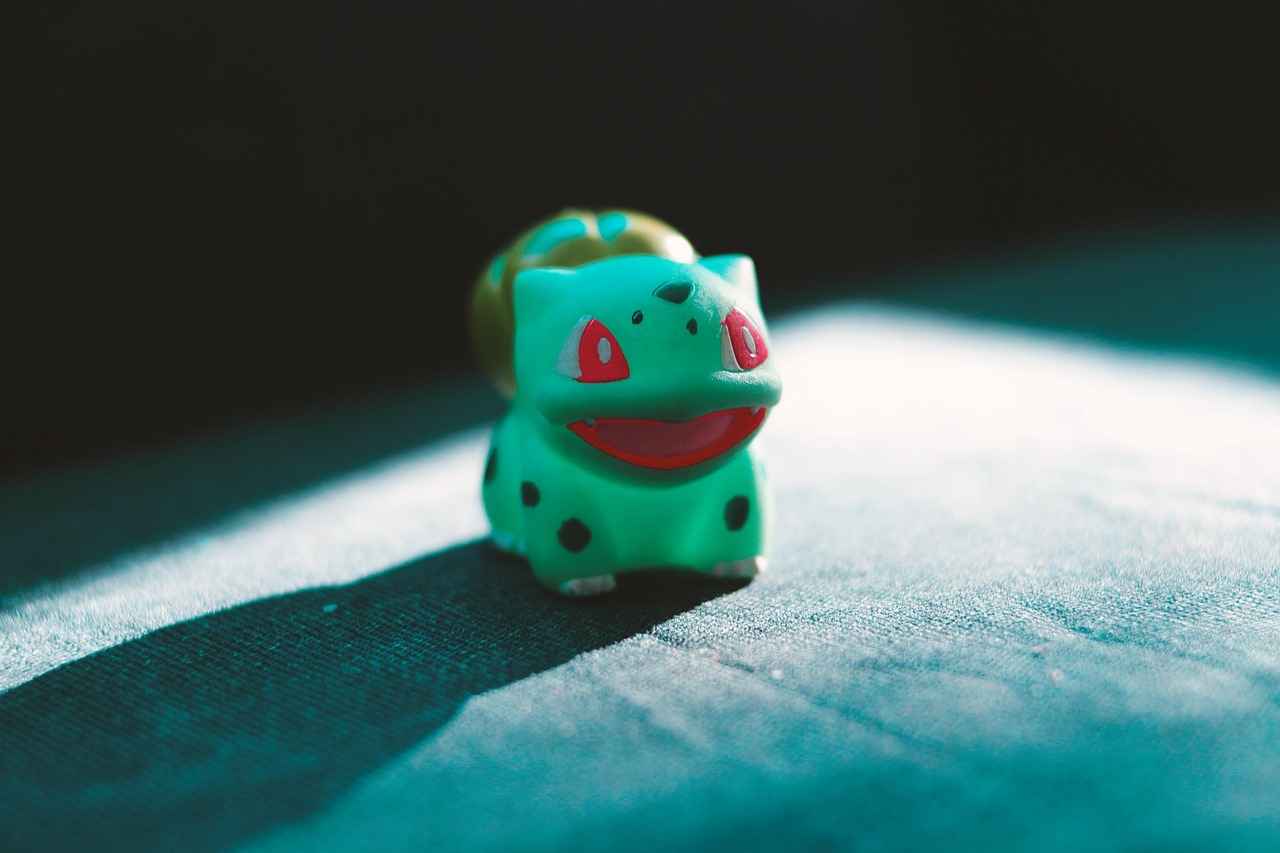
Understanding Bulbasaur: An Overview
Bulbasaur is a fascinating Pokémon that captures the hearts of many fans in the Pokémon series. As a dual-type Grass and Poison Pokémon, it stands out not only for its unique abilities but also for its charming design, which features a plant bulb on its back. This bulb symbolizes Bulbasaur’s growth potential and is a key element in its evolution. Bulbasaur evolves into Ivysaur and eventually into Venusaur, showcasing a remarkable transformation that mirrors its journey as a Pokémon.
Originating from the Kanto region, Bulbasaur is one of the original starter Pokémon, making it a nostalgic choice for many trainers. Its design is inspired by various plants and reptiles, which adds to its appeal. In the Pokémon lore, Bulbasaur is known to be a friendly and loyal companion, often seen in lush green environments where it can thrive.
Bulbasaur’s abilities, such as Chlorophyll and Overgrow, play a significant role in its effectiveness during battles. Chlorophyll allows Bulbasaur to double its speed in sunny weather, making it a formidable opponent. Overgrow, on the other hand, boosts the power of its Grass-type moves when its health is low, ensuring that Bulbasaur can still deliver powerful attacks even in challenging situations.
Moreover, Bulbasaur’s typing grants it advantages against certain Pokémon, particularly those weak to Grass and Poison moves. However, trainers must also be mindful of its vulnerabilities to Fire, Flying, and Psychic types. Understanding these strengths and weaknesses is crucial for developing effective battle strategies.
In summary, Bulbasaur is more than just a starter Pokémon; it is a symbol of growth, resilience, and strategic gameplay. Its unique characteristics and abilities make it a beloved choice among trainers, whether they are new to the series or seasoned veterans.
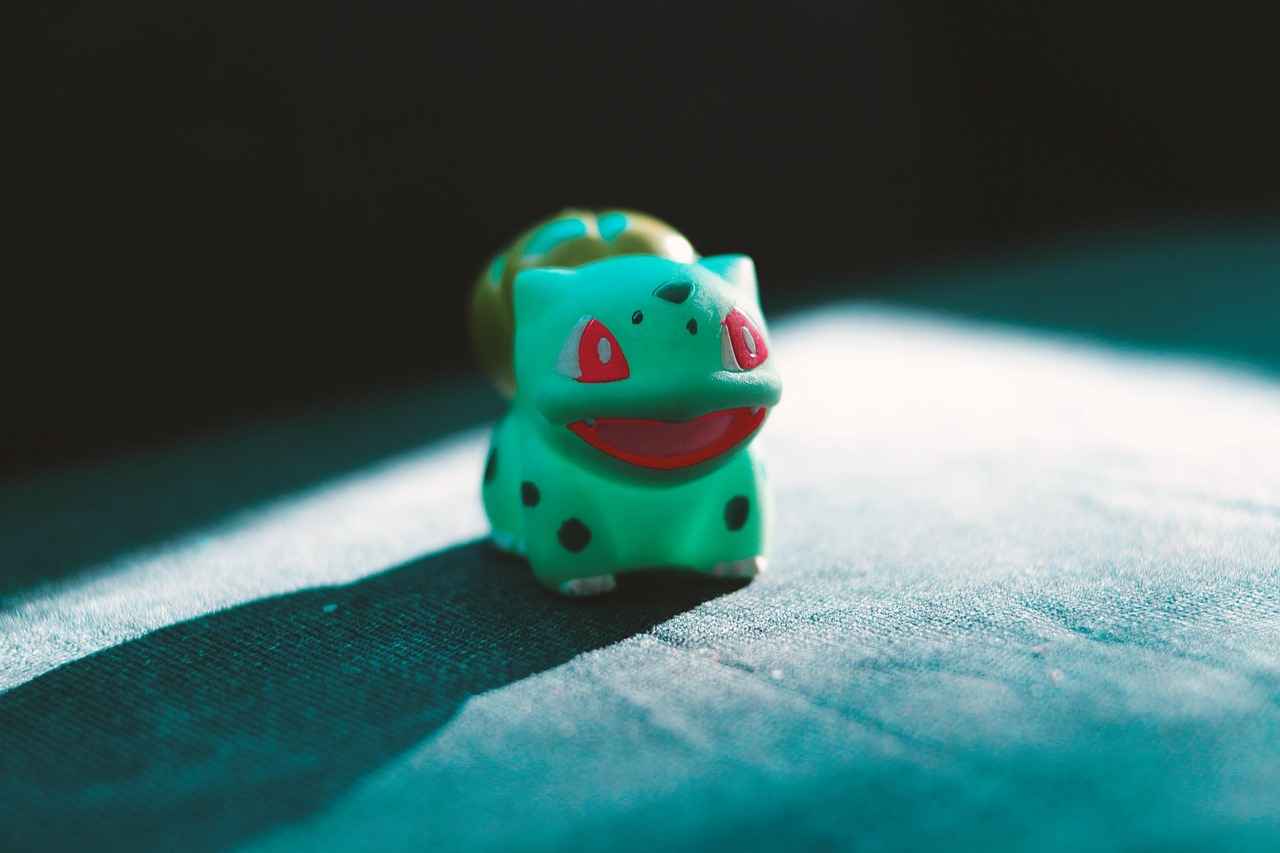
Bulbasaur’s Abilities: What Sets It Apart
Bulbasaur is not just an adorable Pokémon; it possesses unique abilities that significantly enhance its performance in battles. Understanding these abilities is crucial for trainers who want to maximize Bulbasaur’s potential and strategize effectively during encounters. This section delves into Bulbasaur’s primary abilities, Chlorophyll and Overgrow, and examines how they can be strategically utilized in various battle scenarios.
One of Bulbasaur’s standout abilities, Chlorophyll, allows it to double its speed when battling under sunny conditions. This speed boost can turn the tide of battle, enabling Bulbasaur to outpace opponents and strike first. Trainers can leverage this ability by pairing Bulbasaur with Pokémon that can create sunny weather, such as Sunny Day users or those with the ability Solar Power.
- Team Synergy: Forming a team with Pokémon that can manipulate weather conditions will create optimal scenarios for Bulbasaur.
- Speed Control: Use Bulbasaur’s speed to target and eliminate threats before they can act.
Understanding how to anticipate and counter opponents’ moves while using Chlorophyll can provide a competitive edge. Trainers should focus on predicting the opponent’s strategies and using Bulbasaur’s speed to exploit any openings.
Another notable ability is Overgrow, which activates when Bulbasaur’s health falls below one-third of its maximum. This ability boosts the power of Bulbasaur’s Grass-type moves, making them more formidable during critical moments. Trainers can utilize Overgrow to turn the tide in desperate situations, allowing Bulbasaur to unleash powerful attacks like Solar Beam when it matters most.
- Timing is Key: Wait until Bulbasaur’s health is low to launch high-damage Grass-type moves.
- Defensive Play: Implement defensive strategies to keep Bulbasaur in the game until Overgrow activates.
In summary, Bulbasaur’s abilities, Chlorophyll and Overgrow, are not just passive traits; they are integral to developing effective battle strategies. By understanding and utilizing these abilities, trainers can enhance Bulbasaur’s performance and increase their chances of victory in the Pokémon arena.
Chlorophyll: Speed Boost in Sunlight
Chlorophyll is one of Bulbasaur’s most intriguing abilities, particularly due to its impact on speed during sunny weather. When the sun shines bright, this ability doubles Bulbasaur’s speed, transforming it into a swift and formidable opponent on the battlefield. This remarkable speed boost not only enhances Bulbasaur’s offensive capabilities but also opens up new strategic avenues for trainers.
In competitive battles, the implications of Chlorophyll extend beyond mere speed. Trainers can utilize this ability to create a dynamic team composition that maximizes the benefits of sunny weather. For instance, pairing Bulbasaur with Pokémon that can set up sun conditions—such as Vileplume or Charizard—can create a synergistic effect, allowing Bulbasaur to outspeed and outmaneuver opponents before they even have a chance to react.
Moreover, the use of Chlorophyll can significantly alter battle tactics. With its increased speed, Bulbasaur can effectively act as a lead Pokémon, applying pressure early in the match. This advantage allows trainers to dictate the pace of the battle, forcing opponents to adapt quickly or risk being overwhelmed by Bulbasaur’s quick strikes. The ability to strike first can be crucial, especially against slower, more powerful opponents.
However, it is essential for trainers to consider the potential downsides of relying heavily on this ability. While Bulbasaur’s speed is impressive in sunny conditions, it can be countered by opponents who utilize weather-changing moves or abilities, such as Rain Dance or Sandstorm. Therefore, understanding the battlefield dynamics and preparing for various scenarios is crucial for maximizing Bulbasaur’s potential.
In conclusion, Chlorophyll is not just a passive ability for Bulbasaur; it is a game-changer that can redefine battle strategies. By leveraging this speed boost effectively, trainers can enhance their overall performance and create a more formidable presence in competitive play.
Strategies for Utilizing Chlorophyll
In the world of Pokémon battles, leveraging Bulbasaur’s Chlorophyll ability can significantly enhance your strategy, especially in sunny conditions. This section outlines various approaches to maximize Bulbasaur’s speed and effectiveness in combat.
- Team Synergy: Building a team that complements Bulbasaur’s strengths is crucial. Consider pairing Bulbasaur with Pokémon that can create sunny weather, such as Vileplume or Sunny Day users like Charizard. This not only activates Chlorophyll but also boosts the power of Grass-type moves.
- Optimal Conditions: Ensure that battles take place under sunny weather. Utilizing moves like Sunny Day at the start of a battle can set the stage for Bulbasaur to outspeed opponents. Also, keep an eye on the weather dynamics during the match to maintain control over conditions.
- Speed Control: With Chlorophyll doubling Bulbasaur’s speed, prioritize moves that can take advantage of this. Moves like Vine Whip or Solar Beam can deal significant damage before opponents have the chance to retaliate.
- Defensive Strategies: While Bulbasaur is fast, it is also relatively fragile. Consider using Pokémon with defensive moves or abilities to protect Bulbasaur from strong attackers, particularly those with Fire or Flying-type moves, which are its weaknesses.
- Surprise Factor: Opponents may not expect a Bulbasaur to outspeed their Pokémon. Use this to your advantage by setting up unexpected attacks or status moves, such as Sleep Powder, to incapacitate faster foes.
By implementing these strategies, trainers can effectively utilize Bulbasaur’s Chlorophyll ability to gain a competitive edge in battles. Understanding the synergy between team members and the importance of environmental conditions will ensure that Bulbasaur remains a formidable opponent on the battlefield.
Countering Opponents with Chlorophyll
In the competitive world of Pokémon battles, understanding how to effectively use Chlorophyll can significantly enhance your strategy. By anticipating your opponent’s moves, you can not only protect Bulbasaur but also position it to take advantage of its speed boost in sunny weather. Here are some effective strategies to outmaneuver your rivals:
- Assess the Battlefield: Before engaging, evaluate the current conditions. If the weather is sunny, your Bulbasaur will have a speed advantage, allowing it to strike first. This can be crucial in gaining the upper hand against slower opponents.
- Predict Opponent Moves: Understanding common strategies employed by your opponents can help you anticipate their next moves. If you know they typically use strong attacks, consider switching Bulbasaur out to avoid damage, allowing it to come back in when the opponent is vulnerable.
- Utilize Status Effects: Moves that inflict status conditions, such as Sleep Powder or Poison Powder, can create openings. By incapacitating your opponent, you can safely set up Bulbasaur to unleash powerful attacks when they’re unable to retaliate.
- Team Synergy: Pair Bulbasaur with Pokémon that can set up sunny weather or provide support. Pokémon like Charizard or Vileplume can enhance Bulbasaur’s effectiveness, allowing it to outpace and outmaneuver opponents more easily.
- Switch Tactics: If you notice your opponent is preparing for a strong attack, consider switching to another Pokémon that can absorb damage. This allows Bulbasaur to remain healthy and ready to capitalize on any openings that arise.
By employing these strategies, trainers can maximize Bulbasaur’s potential while using Chlorophyll to counter opponents effectively. The key is to remain adaptable and always be a step ahead of your rival.
Overgrow: Powering Up Grass Moves
Overgrow is a key ability of Bulbasaur that significantly enhances its Grass-type moves when its health is low, making it a crucial factor in battle strategy. Understanding how to effectively leverage this ability can turn the tide of a match, especially in critical moments.
When Bulbasaur’s health drops below one-third of its maximum, Overgrow activates, boosting the power of its Grass-type moves by 50%. This increase can be pivotal, allowing Bulbasaur to unleash devastating attacks like Vine Whip or Solar Beam when its opponents least expect it. Trainers should aim to keep track of Bulbasaur’s health during battles, as activating Overgrow can create opportunities for a surprising comeback.
- Timing is Everything: Knowing when to let Bulbasaur’s health drop can be a double-edged sword. While it can maximize damage output, it also puts Bulbasaur at risk. Trainers must weigh the benefits against the potential for a knockout.
- Team Support: Incorporating Pokémon that can heal Bulbasaur or provide defensive support can help maintain its health at strategic levels. Moves like Wish or items such as Oran Berries can keep Bulbasaur in the fight longer.
- Surprise Factor: Opponents may underestimate Bulbasaur when it is low on health. This can be used to the trainer’s advantage, allowing for unexpected high-damage moves that can catch opponents off guard.
In conclusion, utilizing Bulbasaur’s Overgrow ability effectively requires a blend of strategic planning and real-time decision-making. By keeping health levels in mind and using team dynamics to support Bulbasaur, trainers can maximize its potential in battles, turning what seems like a disadvantage into a powerful offensive strategy.
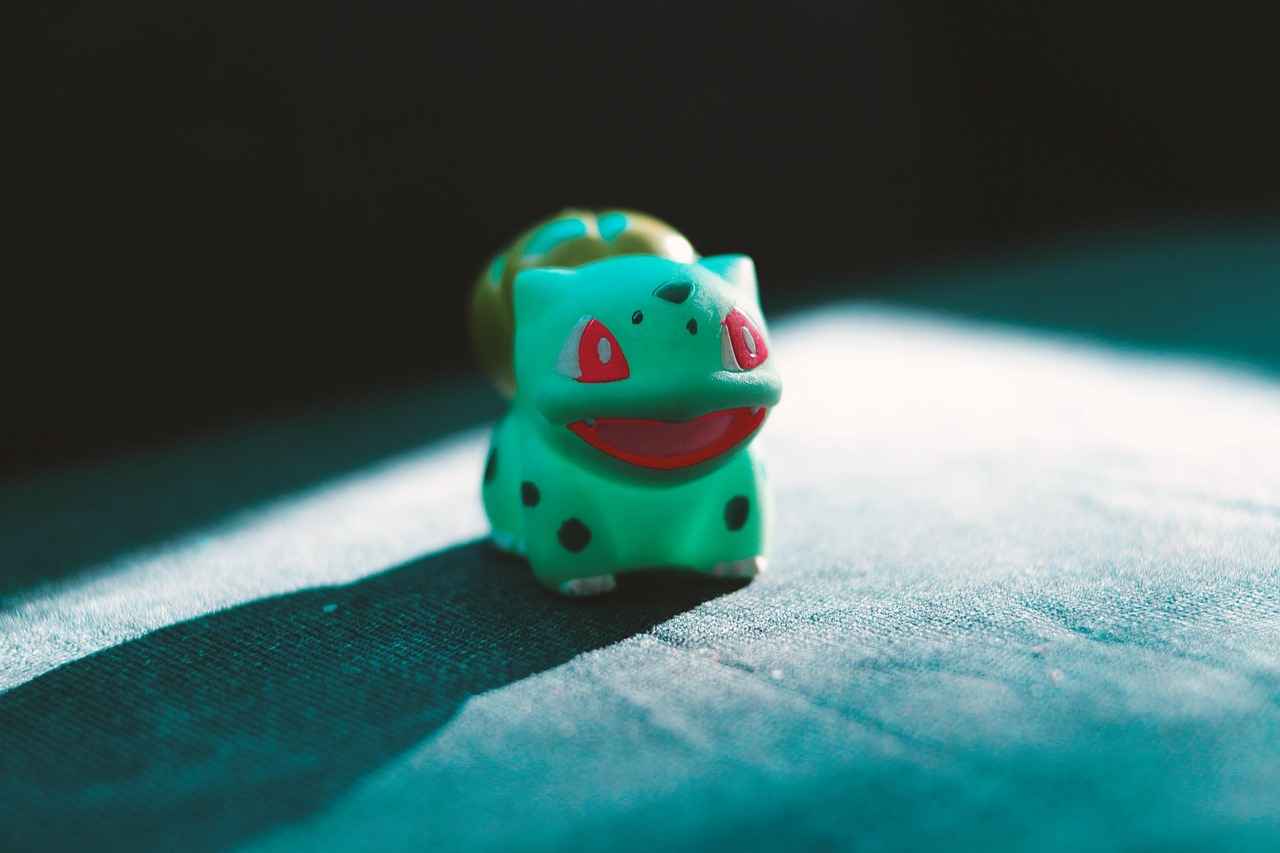
Strengths of Bulbasaur: Advantages in Battle
Bulbasaur, the beloved dual-type Grass/Poison Pokémon, showcases a variety of strengths that make it a formidable contender in battles. Understanding these strengths can significantly enhance a trainer’s strategy, allowing them to capitalize on Bulbasaur’s unique attributes.
- Type Advantages: Bulbasaur’s dual typing offers substantial advantages against several Pokémon types. It excels against Water, Rock, and Fairy types, often dealing super effective damage. This makes Bulbasaur a valuable asset in battles where these types are prevalent.
- Move Set: Bulbasaur’s move set includes powerful attacks such as Vine Whip and Sludge Bomb. These moves not only take advantage of its typing but also provide varied attack options to keep opponents guessing. Utilizing these moves effectively can lead to swift victories.
- Defensive Capabilities: Bulbasaur’s typing also provides it with resistance against certain types, including Water and Fairy. This allows it to withstand hits from these types while retaliating with its own powerful moves.
To maximize Bulbasaur’s strengths, trainers should consider the following strategies:
1. **Utilize Type Matchups:** Always assess the opponent's Pokémon type before engaging. 2. **Leverage Move Variety:** Switch between Bulbasaur's moves to exploit weaknesses in the opponent's team.3. **Create Synergy with Teammates:** Pair Bulbasaur with Pokémon that can cover its weaknesses, such as those resistant to Fire and Flying types.
In conclusion, Bulbasaur’s strengths in type advantages and move versatility make it an exceptional choice for trainers looking to gain an edge in battles. By understanding and utilizing these strengths, trainers can enhance their overall battle strategy and achieve greater success.
Type Advantages: Grass and Poison
Bulbasaur’s dual typing as a Grass and Poison Pokémon provides it with significant advantages in battles, particularly against certain types. Understanding these advantages is crucial for trainers looking to maximize Bulbasaur’s effectiveness in various matchups.
Firstly, Bulbasaur excels against Water types. Grass-type moves are super effective against Water Pokémon, allowing Bulbasaur to deal substantial damage. Moves like Vine Whip can quickly turn the tide in favor of Bulbasaur, especially when facing opponents like Squirtle or Psyduck. This advantage is not only about damage output; it also allows Bulbasaur to control the pace of the battle, forcing opponents to switch out or risk heavy damage.
Secondly, Bulbasaur’s effectiveness against Rock types further enhances its battle potential. Grass-type moves are also super effective against Rock Pokémon, which means that Bulbasaur can utilize its powerful Grass attacks to gain an upper hand against Pokémon like Geodude and Onix. The combination of its typing and move set makes Bulbasaur a formidable opponent in these scenarios.
Additionally, Bulbasaur has unique advantages against Fairy types. While Fairy Pokémon typically resist Poison-type moves, Bulbasaur can still leverage its Grass-type attacks to deal neutral damage. This balance allows trainers to strategize effectively, using Bulbasaur’s diverse move set to adapt to various opponents.
In conclusion, Bulbasaur’s dual typing not only enhances its battle potential but also provides trainers with strategic opportunities against specific Pokémon types. By understanding these advantages, trainers can develop effective strategies to outmaneuver their opponents and capitalize on Bulbasaur’s strengths.
Move Set: Key Attacks and Techniques
Bulbasaur, a beloved dual-type Grass/Poison Pokémon, boasts a diverse move set that can be strategically utilized in battles. Among its most effective attacks are Vine Whip and Sludge Bomb, each offering unique advantages that trainers can leverage for maximum impact.
Vine Whip is a powerful Grass-type move that delivers quick and reliable damage to opponents. With its ability to strike first in many situations, trainers can use Vine Whip to:
- Target Weaknesses: This move is particularly effective against Water, Rock, and Ground-type Pokémon, allowing Bulbasaur to exploit its type advantages.
- Maintain Pressure: The speed of Vine Whip can keep opponents on the defensive, forcing them to react quickly and potentially making mistakes.
- Set Up for Combo Attacks: Following up Vine Whip with other moves can create devastating combinations, especially when paired with Bulbasaur’s ability to enhance its attacks under specific conditions.
Sludge Bomb, on the other hand, is a potent Poison-type move that not only deals significant damage but also has a chance to poison the target. This move can be utilized effectively by trainers to:
- Inflict Status Effects: The potential to poison opponents can gradually wear them down, providing a strategic advantage over time.
- Counter Fairy-types: With its Poison typing, Sludge Bomb is particularly effective against Fairy-type Pokémon, which are otherwise strong against Bulbasaur’s Grass-type moves.
- Utilize STAB (Same Type Attack Bonus): Being a Poison-type move, Sludge Bomb benefits from STAB, increasing its damage output significantly when used by Bulbasaur.
In conclusion, by effectively integrating Vine Whip and Sludge Bomb into their battle strategies, trainers can maximize Bulbasaur’s potential on the battlefield. Understanding how to leverage these moves not only enhances Bulbasaur’s effectiveness but also contributes to a well-rounded team strategy.
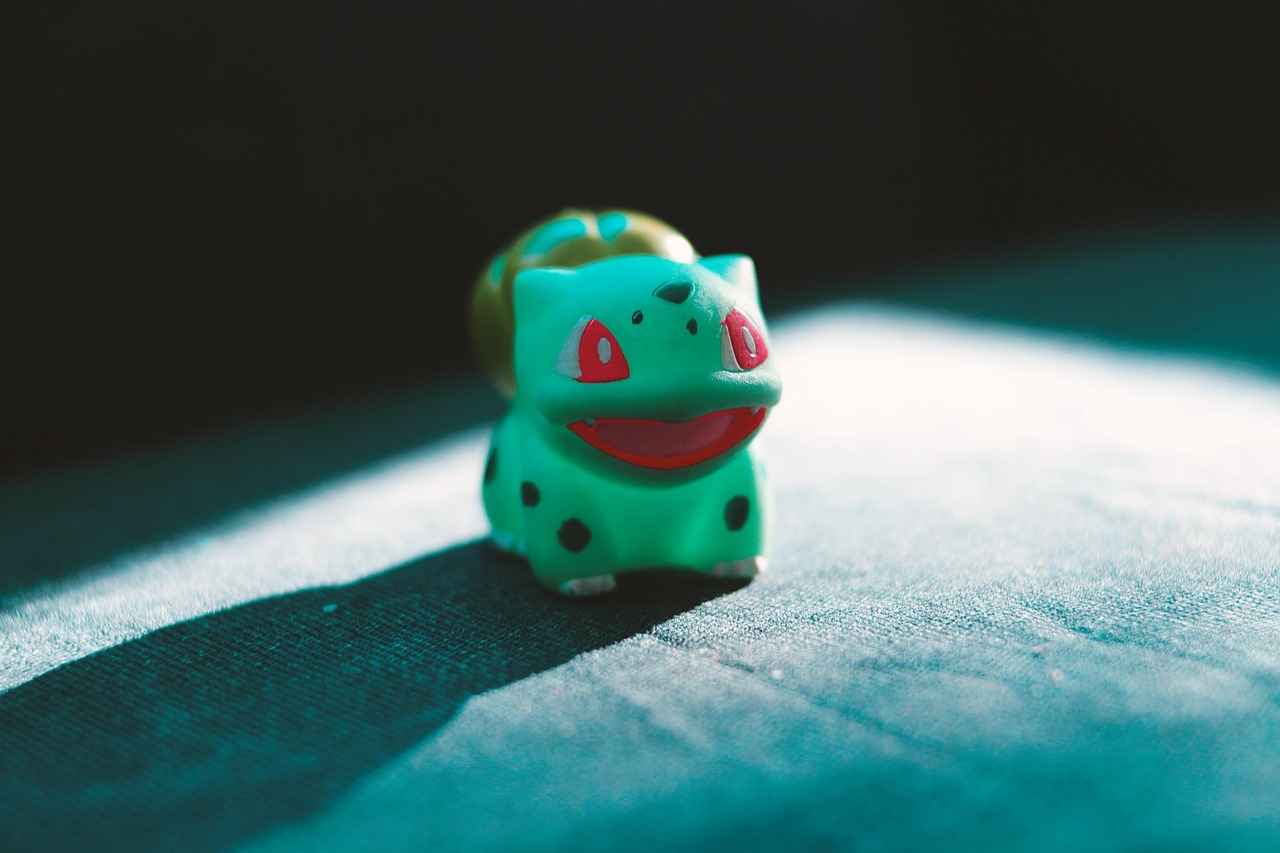
Weaknesses of Bulbasaur: What to Watch Out For
In the world of Pokémon, understanding the weaknesses of each character is crucial for trainers aiming to enhance their battle strategies. Bulbasaur, while possessing several strengths, also has notable vulnerabilities that can be exploited by opponents. This section will delve into Bulbasaur’s weaknesses and provide insights on how trainers can effectively mitigate these disadvantages during battles.
Bulbasaur’s dual typing of Grass and Poison makes it particularly susceptible to certain types of attacks. The following vulnerabilities should be noted:
- Fire-type Moves: Bulbasaur is weak against Fire-type attacks, which can deal significant damage. Trainers should be cautious of Pokémon like Charizard or Arcanine.
- Flying-type Moves: Flying-type Pokémon, such as Pidgeot or Talonflame, can exploit Bulbasaur’s weaknesses, making moves like Hurricane particularly threatening.
- Psychic-type Moves: Pokémon like Alakazam can use Psychic-type moves to inflict heavy damage, especially since Bulbasaur has no resistance to this type.
To safeguard Bulbasaur from its weaknesses, trainers should consider the following strategies:
- Team Composition: Pairing Bulbasaur with Pokémon that resist its weaknesses can create a balanced team. For example, including Steel or Fairy-type Pokémon can help mitigate damage from Fire and Psychic attacks.
- Defensive Moves: Utilizing moves like Protect or Substitute can provide Bulbasaur with temporary safety from incoming attacks, allowing it to execute its own strategies.
- Speed Control: Implementing speed control strategies with moves like Tailwind can help Bulbasaur strike first against faster opponents, reducing its exposure to dangerous attacks.
By understanding and addressing these vulnerabilities, trainers can enhance Bulbasaur’s effectiveness in battle. Employing a well-rounded strategy that considers both its strengths and weaknesses will significantly improve the chances of success in Pokémon battles.
Type Disadvantages: Fire, Flying, and Psychic
Bulbasaur, while being a formidable Pokémon with its Grass and Poison typing, has specific vulnerabilities that trainers must be aware of to maximize its effectiveness in battles. Its weaknesses to Fire, Flying, and Psychic type moves can significantly impact its performance, especially in competitive scenarios. Understanding these weaknesses is crucial for developing effective battle strategies.
- Fire-type Moves: Bulbasaur is particularly susceptible to Fire-type attacks, which deal double damage due to its Grass typing. Moves like Flamethrower or Fire Blast can quickly diminish Bulbasaur’s health. Trainers should avoid direct confrontations with Fire-type Pokémon and consider using Pokémon with resistance to Fire to absorb hits.
- Flying-type Moves: Similarly, Flying-type moves are a major threat to Bulbasaur. The common Flying-type move Hurricane can take advantage of Bulbasaur’s vulnerability, making it essential to strategize around this weakness. Utilizing Pokémon that can counter Flying types, such as Electric or Ice types, can help mitigate this risk.
- Psychic-type Moves: Psychic-type moves also pose a significant danger to Bulbasaur. Moves like Psyshock exploit Bulbasaur’s lower Special Defense, leading to potentially devastating damage. Trainers should be cautious when facing Psychic-type Pokémon and may want to include Dark or Ghost-type allies in their team to counteract these threats.
In summary, while Bulbasaur has strengths that can be leveraged in battle, its vulnerabilities to Fire, Flying, and Psychic-type moves necessitate careful planning and team composition. By anticipating these threats and employing appropriate counter-strategies, trainers can protect Bulbasaur and enhance its battle effectiveness.
Counter Strategies: Protecting Bulbasaur
Bulbasaur, while a versatile Pokémon, has specific weaknesses that can be exploited by opponents. To ensure its survival and effectiveness in battles, trainers must implement counter strategies that focus on minimizing damage and enhancing its defensive capabilities. Below are some practical tips and strategies to protect Bulbasaur from its vulnerabilities.
- Team Composition: Surround Bulbasaur with Pokémon that can cover its weaknesses. Including Pokémon with Fire, Flying, and Psychic resistance can create a balanced team. For example, pairing Bulbasaur with a Steel or Rock type can help absorb damage from its common threats.
- Defensive Moves: Equip Bulbasaur with moves that enhance its survivability. Moves like Leech Seed can provide healing over time, while Protect allows it to shield itself from damage during critical moments. This can be especially useful when anticipating an opponent’s powerful attack.
- Utilizing Status Effects: Take advantage of Bulbasaur’s ability to inflict status conditions. Moves such as Sleep Powder or Poison Powder can incapacitate opponents, giving Bulbasaur the upper hand while minimizing incoming damage.
- Field Control: Leverage environmental advantages by using moves like Sunny Day to boost Bulbasaur’s speed through its Chlorophyll ability. This can help it outspeed threats and retaliate before taking damage.
- Switching Strategy: Don’t hesitate to switch Bulbasaur out when facing a known counter. Having a well-timed switch can mitigate damage and allow Bulbasaur to re-enter the battle when conditions are more favorable.
By implementing these strategies, trainers can significantly enhance Bulbasaur’s durability in battles. The key is to create a supportive environment that allows Bulbasaur to thrive while minimizing its exposure to threats. This proactive approach can turn Bulbasaur into a formidable contender on any team.
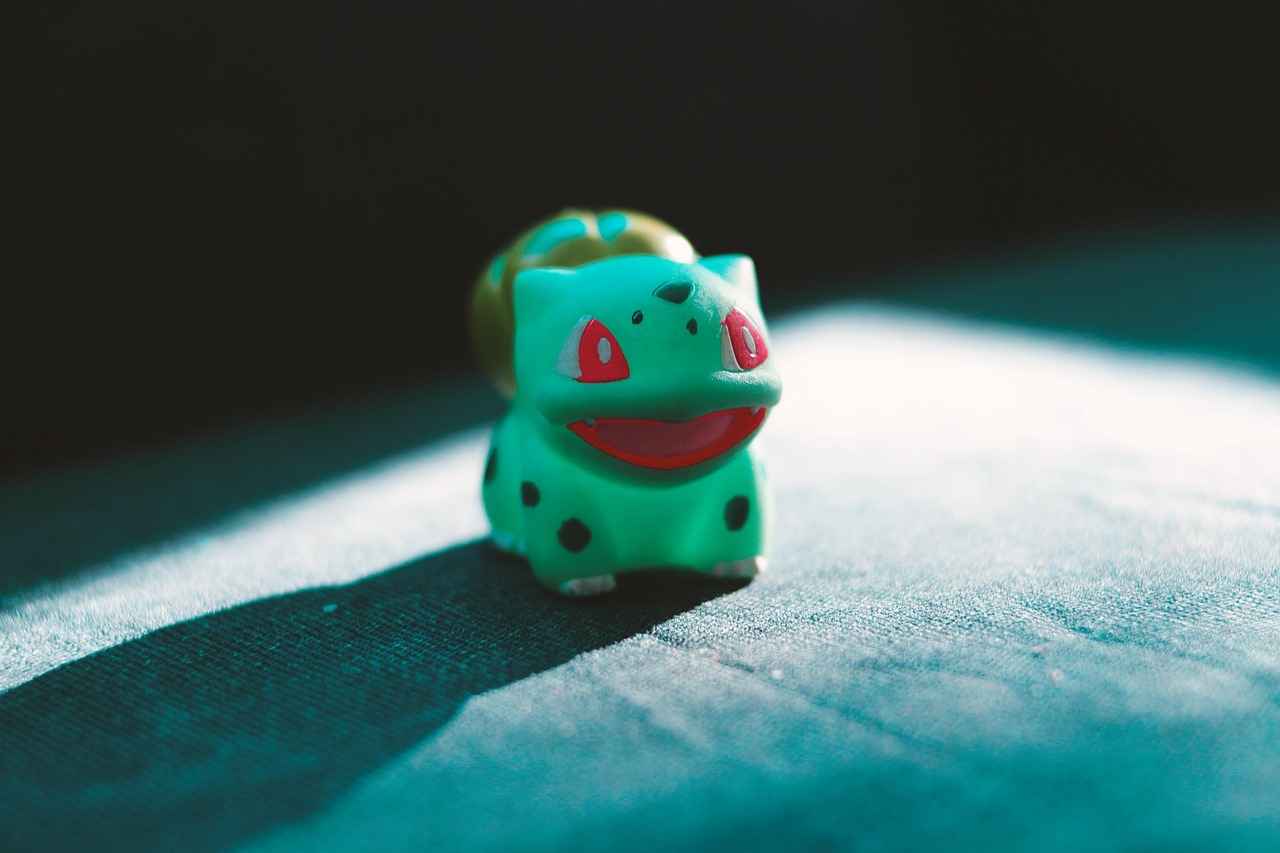
Effective Battle Strategies for Bulbasaur
Effective battle strategies are essential for trainers who wish to maximize the potential of their Bulbasaur in Pokémon battles. Understanding how to effectively utilize Bulbasaur’s unique abilities and strengths can significantly enhance its performance on the battlefield. This section provides trainers with practical insights and tactical approaches that can lead to success in various battle scenarios.
One of the first steps in creating an effective strategy is to consider team composition. Bulbasaur thrives when paired with Pokémon that can cover its weaknesses, particularly Fire, Flying, and Psychic types. For instance, incorporating a strong Water-type Pokémon can provide a solid defense against Fire-type moves, while also benefiting from Bulbasaur’s ability to counter Rock and Ground types with its Grass-type moves.
Another critical aspect of battle strategy involves understanding the optimal use of Bulbasaur’s abilities. Utilizing Bulbasaur’s Chlorophyll ability during sunny weather can double its speed, allowing it to outpace many opponents. Trainers should consider using moves like Sunny Day to create favorable conditions, enabling Bulbasaur to strike first and potentially take down threats before they can retaliate.
Moreover, the Overgrow ability can be a game-changer during critical moments in battle. When Bulbasaur’s health is low, its Grass-type moves become significantly stronger. Trainers should plan to keep Bulbasaur in the fight until its health is reduced, allowing them to unleash powerful attacks when it matters most.
In addition to these abilities, trainers should also focus on offensive and defensive tactics. Offensive strategies may include using Bulbasaur’s strong moves like Vine Whip and Sludge Bomb effectively, while defensive tactics should involve switching Bulbasaur out when facing strong threats. This adaptability can keep Bulbasaur in play longer, allowing it to contribute to the team’s success.
Lastly, continuous practice and adaptation to different battle scenarios will enhance a trainer’s effectiveness with Bulbasaur. Analyzing past battles and learning from mistakes can provide valuable insights into what strategies work best against various opponents.
In conclusion, by implementing these effective battle strategies, trainers can unlock the full potential of Bulbasaur, making it a formidable contender in any Pokémon battle.
Team Composition: Building Around Bulbasaur
Creating a well-rounded team that complements Bulbasaur’s strengths is essential for maximizing its effectiveness in battles. By carefully selecting Pokémon partners that can cover its weaknesses and enhance its abilities, trainers can significantly improve their overall performance in competitive scenarios.
Ideal Pokémon Partners for Bulbasaur
- Charizard: As a Fire/Flying type, Charizard can effectively counter Bulbasaur’s weaknesses to Fire and Flying moves. Its high speed and special attack can provide offensive pressure while Bulbasaur supports with status moves like Sleep Powder.
- Gyarados: This Water/Flying type can help mitigate Bulbasaur’s vulnerabilities to Fire and Psychic types. Gyarados can also set up Rain Dance to boost Bulbasaur’s Chlorophyll ability, enhancing its speed during battles.
- Clefable: As a Fairy type, Clefable offers great synergy with Bulbasaur by providing coverage against Dragon and Fighting types. Additionally, Clefable’s ability to learn moves like Thunder Wave can help control the battlefield.
Roles of Each Partner in Battle
| Pokémon | Type | Role in Team |
|---|---|---|
| Charizard | Fire/Flying | Offensive Pressure |
| Gyarados | Water/Flying | Defensive Support |
| Clefable | Fairy | Status Inducer |
By integrating these partners into a team, trainers can create a dynamic strategy that leverages Bulbasaur’s unique abilities while compensating for its weaknesses. The synergy between these Pokémon can lead to powerful combinations, such as using Bulbasaur’s Sleep Powder to incapacitate foes, allowing Charizard to unleash devastating attacks.
In conclusion, a thoughtfully constructed team around Bulbasaur not only enhances its battle performance but also creates opportunities for strategic plays that can turn the tide in competitive matches. Trainers should focus on building a balanced team that maximizes synergy to achieve success in battles.
Battle Tactics: Offensive and Defensive Approaches
In the world of Pokémon battles, understanding how to effectively utilize Bulbasaur can significantly impact a trainer’s success. This section delves into actionable strategies for both offensive and defensive tactics, ensuring that trainers can deploy Bulbasaur in various battle scenarios with confidence.
Offensive Tactics: Bulbasaur’s dual typing of Grass and Poison provides it with unique advantages that can be exploited in battles. Trainers should focus on using its strong Grass-type moves, such as Vine Whip and Solar Beam, to deal significant damage to Water, Rock, and Ground-type Pokémon. Additionally, utilizing its ability Overgrow can enhance the power of these moves when Bulbasaur’s health is low, turning the tide of battle in critical moments.
- Type Matchups: Always be aware of your opponent’s Pokémon types. Use Bulbasaur’s strengths to exploit type advantages.
- Speed Advantage: If the battle conditions are sunny, leverage Bulbasaur’s Chlorophyll ability to outpace opponents and strike first.
- Combination Attacks: Pair Bulbasaur with Pokémon that can set up weather conditions or provide support moves to enhance its offensive capabilities.
Defensive Tactics: While Bulbasaur is capable of delivering powerful attacks, it is equally important to protect it from its vulnerabilities. Given its weaknesses to Fire, Flying, and Psychic-type moves, trainers should implement strategies that minimize these risks.
- Team Synergy: Build a team that can cover Bulbasaur’s weaknesses. Incorporate Pokémon that can resist or counter these types effectively.
- Strategic Switching: Use switches wisely to bring in a more resistant Pokémon when facing threats to Bulbasaur.
- Defensive Moves: Equip Bulbasaur with moves like Leech Seed to regain health and wear down opponents over time.
By mastering these offensive and defensive approaches, trainers can enhance their battle strategies with Bulbasaur, ensuring it remains a formidable contender in any matchup.
